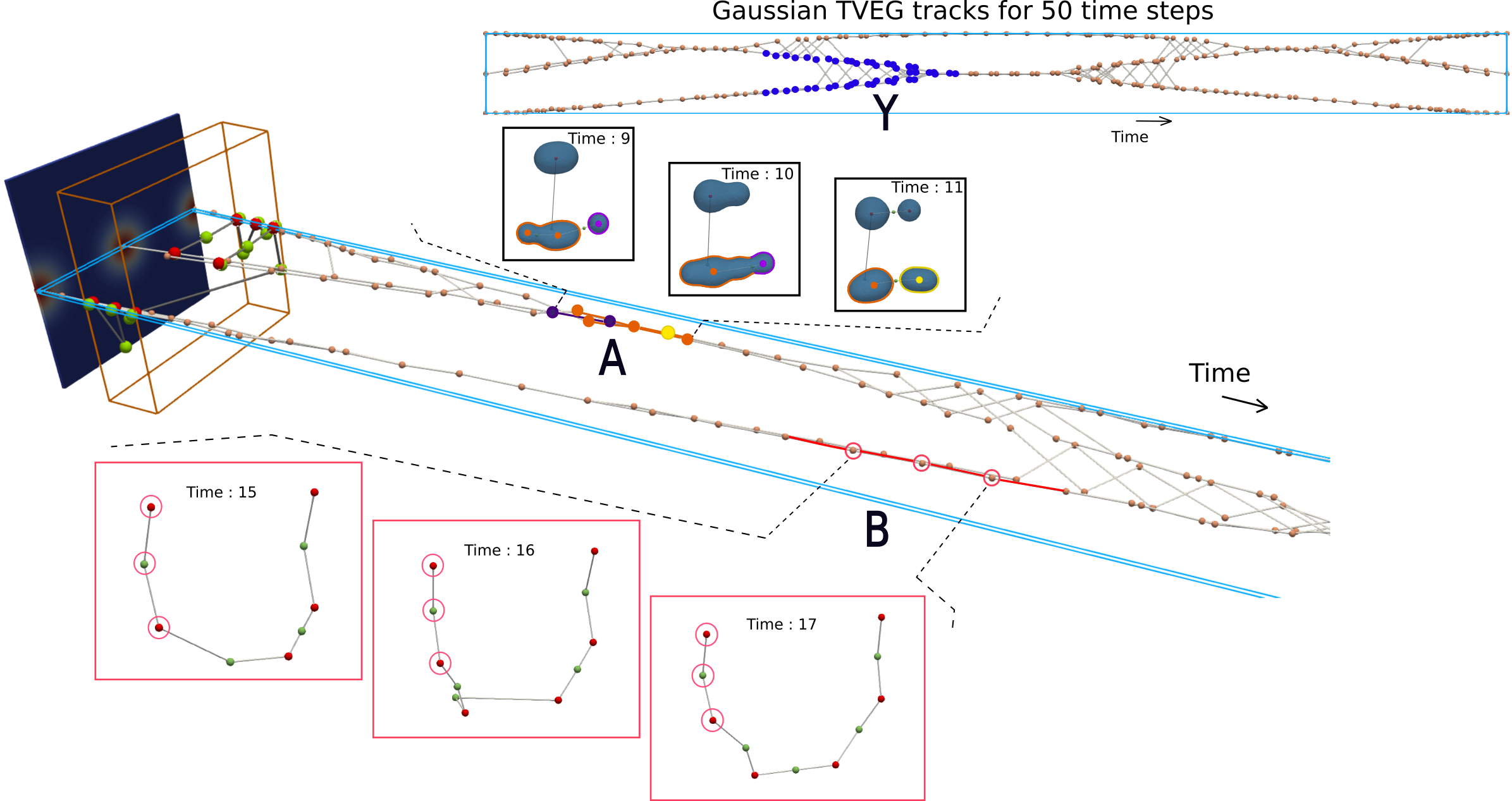Time-varying Extremum Graphs
Computer Graphics Forum, 2024

Abstract:
We introduce time-varying extremum graph (TVEG), a topological structure to support visualization and analysis of a time-varying scalar field. The extremum graph is a sub-structure of the Morse–Smale complex. It captures the adjacency relationship between cells in the Morse decomposition of a scalar field. We define the TVEG as a time-varying extension of the extremum graph and demonstrate how it captures salient feature tracks within a dynamic scalar field. We formulate the construction of the TVEG as an optimization problem and describe an algorithm for computing the graph. We also demonstrate the capabilities of TVEG towards identification and exploration of topological events such as deletion, generation, split and merge within a dynamic scalar field via comprehensive case studies including a viscous fingers and a 3D von Kármán vortex street dataset.
Download Paper DOI
To cite: Somenath Das and Raghavendra Sridharamurthy and Vijay Natarajan "Time-varying Extremum Graphs" CGF 10.1111/cgf.15162
BibTeX:
@article{DasetalCGF2024, author = {Das, Somenath and Sridharamurthy, Raghavendra and Natarajan, Vijay}, title = {Time-varying Extremum Graphs}, journal = {Computer Graphics Forum}, volume = {n/a}, number = {n/a}, pages = {e15162}, keywords = {visualization, scientific visualization, topological methods, extremum graphs}, doi = {https://doi.org/10.1111/cgf.15162}, url = {https://onlinelibrary.wiley.com/doi/abs/10.1111/cgf.15162}, eprint = {https://onlinelibrary.wiley.com/doi/pdf/10.1111/cgf.15162}, abstract = {We introduce time-varying extremum graph (TVEG), a topological structure to support visualization and analysis of a time-varying scalar field. The extremum graph is a sub-structure of the Morse–Smale complex. It captures the adjacency relationship between cells in the Morse decomposition of a scalar field. We define the TVEG as a time-varying extension of the extremum graph and demonstrate how it captures salient feature tracks within a dynamic scalar field. We formulate the construction of the TVEG as an optimization problem and describe an algorithm for computing the graph. We also demonstrate the capabilities of TVEG towards identification and exploration of topological events such as deletion, generation, split and merge within a dynamic scalar field via comprehensive case studies including a viscous fingers and a 3D von Kármán vortex street dataset.} } 